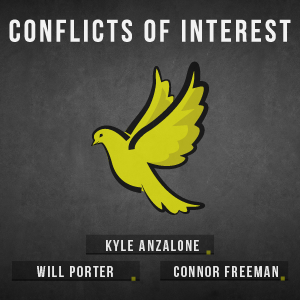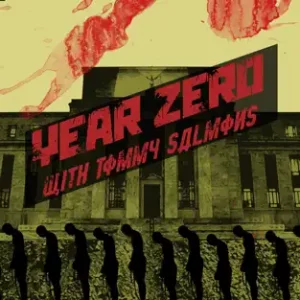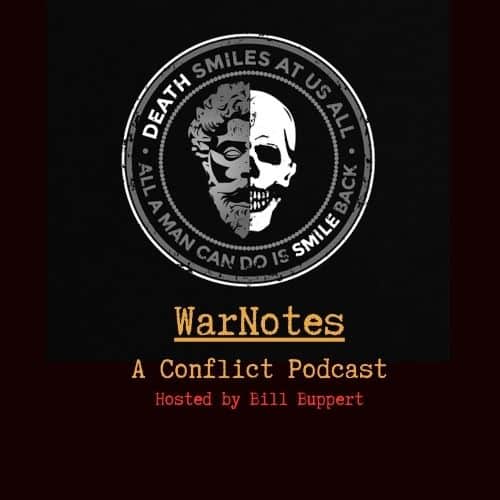Blog
Sanctions, Deployments & Tanker Attacks: A Timeline of Recent US-Iran Hostilities
As US relations with Iran plumb new depths in the wake of Washington’s unilateral withdrawal from the JCPOA, it’s easy to lose track of the seemingly endless series of new sanctions, troop deployments and explosions in and around the Persian Gulf in recent months.
In an effort to keep it all straight, here’s a timeline of the major escalations between Washington and Tehran over the last year and a half, with some other related events.
May 8, 2018 – President Trump abrogates Washington’s end of the Joint Comprehensive Plan of Action (JCPOA).
May 21, 2018 – Secretary of State Mike Pompeo gives “12 points” ultimatum speech at the Heritage Foundation, laying the groundwork for the “maximum pressure campaign.”
September 25, 2018 – Pompeo addresses United Against Nuclear Iran summit, painting Iran as an “outlaw regime” and calling on the international community to join US efforts against its “malign activity.”
November 5, 2018 – US restores all pre-nuclear deal sanctions on Iran.
April 8, 2019 – US designates Iranian Revolutionary Guards Corps (IRGC) a terrorist organization.
April 15, 2019 – Then-National Security Advisor John Bolton meets with his Israeli counterpart – National Security Council head Meir Ben-Shabbat – in Washington, who tells Bolton of an impending Iranian attack plot.
April 22, 2019 – US ends most waivers on oil trade with Iran, threatening sanctions on any other countries or entities that continue doing business with the Islamic Republic.
May 4, 2019 – US sanctions Iran’s ability to export excess enriched uranium, making it far more difficult to comply with the JCPOA’s 300kg cap.
May 5, 2019 – US moves Carrier Strike Group (USS Abraham Lincoln) and Bomber Task Force into / near Persian Gulf, citing “escalatory indications” from Iran.
May 7, 2019 – US deploys four B52 Stratofortresses to al-Udeid Air Base near Doha, Qatar over alleged “attack plot.”
May 12, 2019 – Four ships – two Saudi tankers, a Norweigan tanker, and an Emirati vessel – damaged in apparent attack at the Port of Fujairah, Saudi Arabia.
May 14, 2019 – First Houthi attack on Saudi oil infrastructure (two pumping stations west of Riyadh).
May 20, 2019 – Iran announces it will quadruple uranium enrichment, despite inability to get rid of its excess stockpile, in first step of non-compliance with the JCPOA.
May 24, 2019 – US deploys 900 troops, a Patriot missile battalion, combat and reconnaissance aircraft and intelligence assets to Middle East in response to May 12 tanker attack.
June 7, 2019 – US sanctions Iran’s petrochemical industry, citing ties to the IRGC.
June 13, 2019 – Two tankers – Panama-flagged / Japanese-operated tanker Kokuka Courageous, and Marshall Islands-flagged / Norweigan-operated Front Altair – damaged in apparent limpet mine attack in the Gulf of Oman. Shipping company disputes “mine” story, insists “flying objects” hit vessel.
June 17, 2019 – US deploys 1,000 soldiers to Middle East in response to June 13 tanker attacks.
June 20, 2019 – Iran shoots down $130 million US Global Hawk Drone. Trump calls off retaliation strikes several days later.
June 24, 2019 – US sanctions Iranian Supreme Leader Ayatollah Ali Khamenei and other top officials.
July 4, 2019 – British Royal Marines seize Iranian tanker Grace 1 in Gibraltar, arguing it was on its way to sell oil to Syria, in violation of EU sanctions. Iran slams the move as “piracy.”
July 7, 2019 – Iran announces it will enrich uranium beyond the 3.67% level allowed under the JCPOA, in second step of non-compliance with the deal.
July 19, 2019 – Iran seizes British-flagged tanker Stena Impero in response to July 4 Grace 1 incident.
July 24, 2019 – Iran tests medium-range Shahab-3 ballistic missiles.
July 31, 2019 – US sanctions Iranian Foreign Minister Javad Zarif.
August 16, 2019 – Girbraltar frees Iranian tanker Grace 1, over American objections.
August 17, 2019 – Second Houthi attack on Saudi oil infrastructure, used 10 drones (Shaybah oil field).
September 3, 2019 – US sanctions Iranian Space Agency and related entities, claiming they’re involved in missile work.
September 7, 2019 – Iran announces it has begun using advanced centrifuges prohibited under the nuclear accord, in third stage of non-compliance.
September 14, 2019 – Third Houthi attack on Saudi oil infrastructure, major strikes using drones and missiles (processing facility in Abqaiq and oil field in Kurais). US and Saudi Arabia blame Iran.
September 20, 2019 – US sanctions Iran’s central bank and National Development Fund, claiming they fund Hezbollah and the IRGC.
September 26, 2019 – US sends 200 soldiers, a Patriot battery and four Sentinel radars to Saudi Arabia, citing September 14 Houthi attack.
September 27, 2019 – Iran frees UK-flagged tanker Stena Impero.
September 30, 2019 – Eight EU states join France, Germany and the UK in sanctions-circumventing trade vehicle INSTEX, with two more likely to follow, putting the total at 13 nations.
October 11, 2019 – US sends 1,800 troops – adding to another 1,000 sent earlier in October – two squadrons of fighter jets, an air expeditionary wing, two Patriot batteries and one THAAD unit to Saudi Arabia, citing Iranian threat. 11,000 soldiers have been deployed to the region since May.
Palestinians’ Living Standard? Don’t Change the Subject!
Opposing Palestinian self-determination because West Bank Arabs have a higher living standard than other Arabs is like opposing the abolition of slavery because, unlike white factory workers, slaves have job security.

Should the Government Crack Down on Fake News in Social Media?

Year Zero: The Red Pill Era
In Episode 72 Tommy takes a deep dive into the modern politic of America. The conservative elements of society have coopted the term red pill in an effort to propagandize the public into their idea of order and justice while coopting the progressive idea that government is all powerful, giving people access to inherent rights. As they giveth, so shall they take away.
Listen to Year Zero
Kamala Harris’s Offices Fought Payments to Wrongly Convicted
Kamala Harris is a monster.
[Innocent convict] Diaz’s battle with Harris’ office began in 2012 when a judge reversed his conviction. As state attorney general, her staff vigorously resisted his claim for compensation and tried to make him re-register as a sex offender, despite a formal ruling in April 2013 that he was innocent.
The Diaz case is one of a series of battles Harris’ prosecutors waged — in both the offices of San Francisco district attorney and California attorney general — to resist innocence claims, often using technical timeliness or jurisdictional arguments, lawyers and innocence advocates say.
“The goal is justice,” said Gerald Schwartzbach, Diaz’s lawyer. “The goal isn’t just rules, regulations and procedures. They penalized an innocent man with technical arguments. To me that’s fundamentally contradictory to the whole purpose of the criminal justice system. …
The California attorney general’s office under Harris resisted the innocence claim of Daniel Larsen by arguing that he hadn’t filed his petition for release in a timely fashion, and also contested his request for compensation after he was exonerated. Larsen had been sentenced to 27-years-to-life for possession of a knife under California’s “three-strikes” law.”
New Jersey Cop Tortures His Own Baby to Death
Ron and Dan: Kurds Make Alliance With Assad – Victory for America (But Not for Neocons)
Neocon tears last week over the plight of the Kurds has turned to furious anger with news that yesterday a deal was inked between the Kurds and the Syrian government. Syrian Arab Army forces are rushing into formerly Kurd-held areas to stave off a Turk incursion into Syrian territory. The Kurd/Assad alliance is the end of “regime change” for Syria and the end of one of the dumbest US interventions in history. How long till US troops are fully vacated from their illegally-held posts inside Syria? On today’s Ron Paul Liberty Report:
Reprinted from The Ron Paul Institute for Peace & Prosperity.









